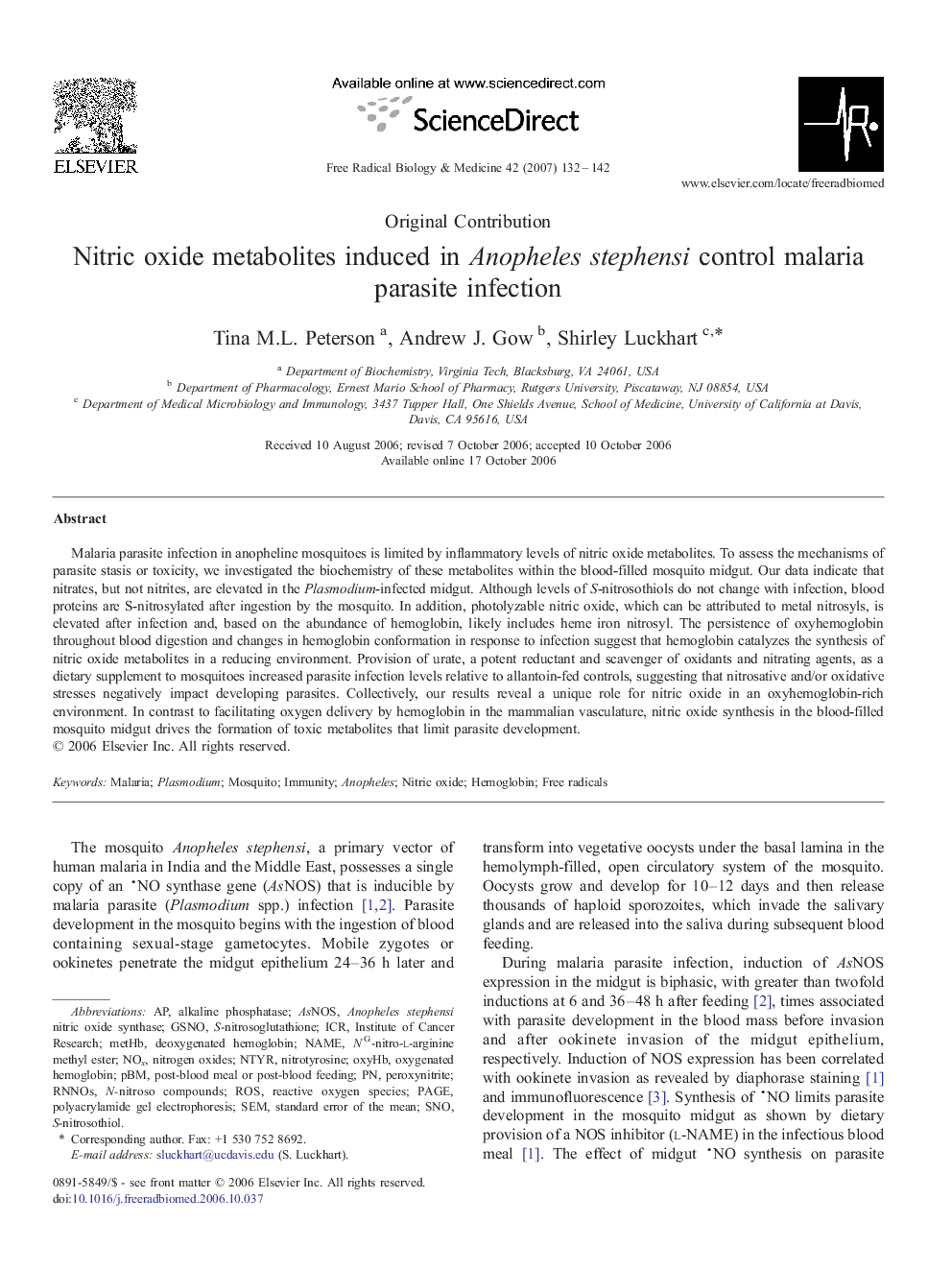| Article ID | Journal | Published Year | Pages | File Type |
|---|---|---|---|---|
| 1910926 | Free Radical Biology and Medicine | 2007 | 11 Pages |
Malaria parasite infection in anopheline mosquitoes is limited by inflammatory levels of nitric oxide metabolites. To assess the mechanisms of parasite stasis or toxicity, we investigated the biochemistry of these metabolites within the blood-filled mosquito midgut. Our data indicate that nitrates, but not nitrites, are elevated in the Plasmodium-infected midgut. Although levels of S-nitrosothiols do not change with infection, blood proteins are S-nitrosylated after ingestion by the mosquito. In addition, photolyzable nitric oxide, which can be attributed to metal nitrosyls, is elevated after infection and, based on the abundance of hemoglobin, likely includes heme iron nitrosyl. The persistence of oxyhemoglobin throughout blood digestion and changes in hemoglobin conformation in response to infection suggest that hemoglobin catalyzes the synthesis of nitric oxide metabolites in a reducing environment. Provision of urate, a potent reductant and scavenger of oxidants and nitrating agents, as a dietary supplement to mosquitoes increased parasite infection levels relative to allantoin-fed controls, suggesting that nitrosative and/or oxidative stresses negatively impact developing parasites. Collectively, our results reveal a unique role for nitric oxide in an oxyhemoglobin-rich environment. In contrast to facilitating oxygen delivery by hemoglobin in the mammalian vasculature, nitric oxide synthesis in the blood-filled mosquito midgut drives the formation of toxic metabolites that limit parasite development.
